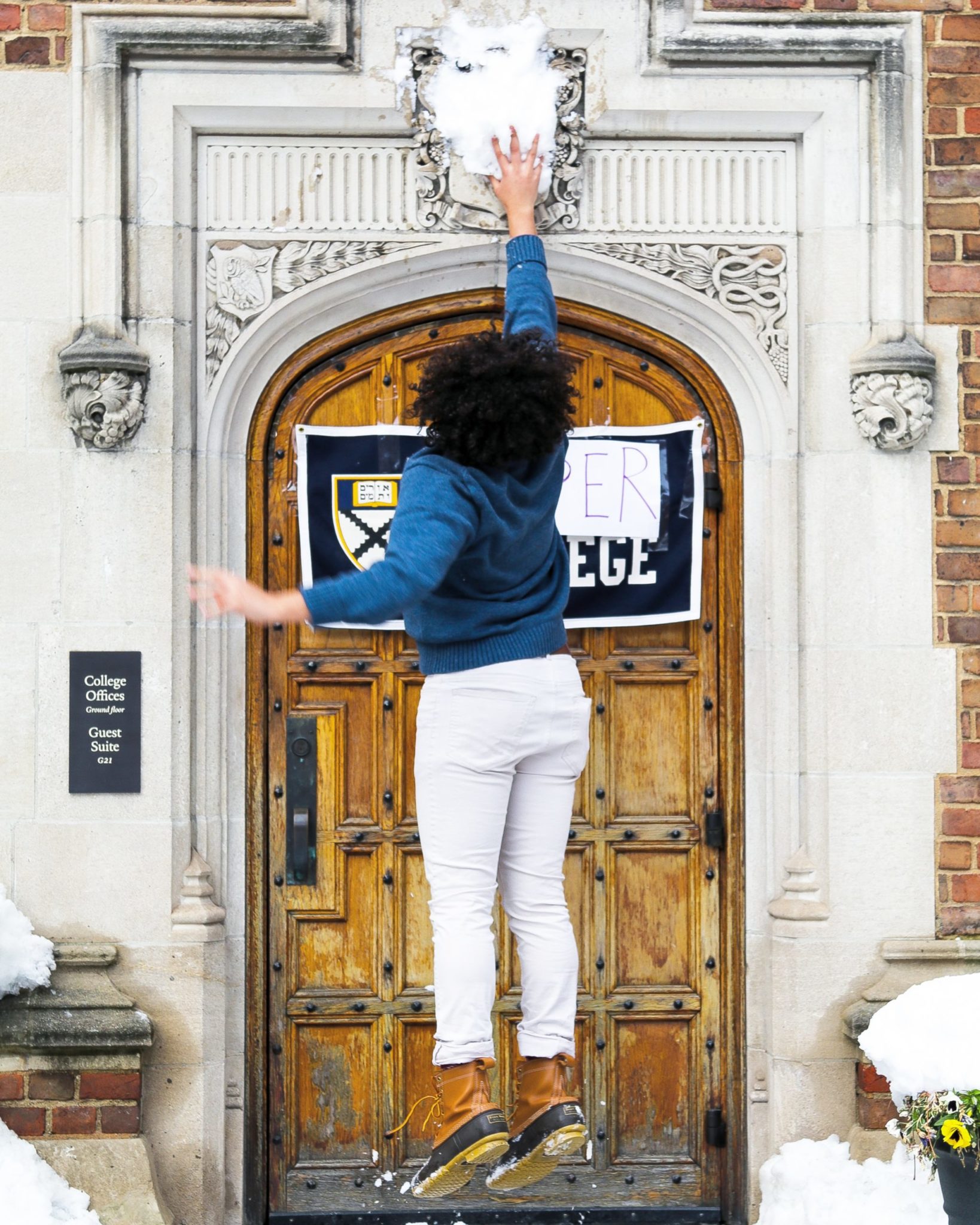
Graduating seniors who began their Yale careers as Hounies are wrapping up their “bright college years” as Hoppers. As of this May, the Grace Hopper College class of 2020 is the last in the University’s 319-year history to have ever lived in Calhoun college.
The renaming of Calhoun college after Grace Murray Hopper GRD ’34 — a trailblazing computer scientist, mathematician and United States Navy rear admiral — ensued from years of heated debates, adamant protesting and controversial administrative decisions. In February 2017, 86 years after the residential college was named in honor of John C. Calhoun — a vocal pro-slavery advocate, former vice president of the United States and member of the graduating class of 1804 — the Yale Corporation concluded that an association with his name had no place at the university.
“Calhoun’s legacy as a white supremacist and a national leader who passionately supported slavery as a ‘positive good’ fundamentally conflicts with Yale’s mission and values,” University President Peter Salovey wrote in an email to the campus community on the day of the announcement.
The decision marked the first time in Yale history when a choice to name a University building was overturned in condemnation of its namesake’s legacy.
The movement for the name change ignited in 1992, when students came together to demand that the illustration of a shackled slave kneeling at Calhoun’s feet, displayed on a stained glass panel in the college’s common room, be taken down. In January 2016, Julia Adams, head of Hopper College since 2014, asked that three oil paintings of Calhoun be removed, and in November of that same year, the Calhoun dining hall was renamed after Roosevelt Thompson ’84, an admired alumnus of the college who passed away in a car accident two months prior to his graduation.
Nevertheless, despite these actions on the University’s part to usher in a period of change, the conversation surrounding Calhoun was fraught with contentious turns. On April 27, 2016, apprehensive of historical erasure, Salovey communicated to the Yale community that the college would continue to be named after Calhoun — a decision that was met with discontent by many students, scholars and faculty members.
But while many members of the Yale community made their displeasure toward this decision well-known, there were also some who claimed that changing the name would suggest an attempt to efface Yale’s responsibility in bestowing an undue honor, which, in itself, seemed to represent that the university once condoned the attitudes of which Calhoun was a proponent.
“Removing Calhoun’s name obscures the legacy of slavery rather than addressing it,” Salovey wrote in an email in April 2016. “Erasing Calhoun’s name from a much-beloved residential college risks masking this past, downplaying the lasting effects of slavery and substituting a false and misleading narrative, albeit one that might allow us to feel complacent or, even, self-congratulatory.”
The administration’s decision only bolstered much of the Yale community’s resolution to insist that the residential college’s name be changed. In May 2016, the Yale Faculty of Arts and Sciences Senate decided, with a vote of 18–1, to pen a letter to Salovey and the Corporation requesting a reevaluation of their decision — a move that mirrored efforts by other faculty members, such as professor of molecular biophysics and biochemistry Andrew Miranker, who collected approximately 400 faculty signatures in an open letter. The cause also garnered the support of New Haven locals, who allied themselves with Yale protesters in the “Change the Name” movement, which fought against the University’s decision.
In June 2016, the debate gained national attention when Corey Menafee, a dishwasher for the Hopper dining hall, used a broomstick to shatter a stained glass windowpane, which portrayed slaves picking up cotton in a field, in the residential college’s dining hall. The act, deemed out of character by Menafee’s friends and colleagues, happened after a visiting alumnus told him about the image, which he had never noticed before. According to Menafee, this was a response to something he deemed to have “no real place in … today’s society,” to be “degrading” and to be “disrespectful.” Despite having initially been arrested and forced to resign, Menafee later resumed his position at Yale under a non-disclosure agreement.
The question of renaming the college was rekindled in August 2016 when Salovey formed the Committee to Establish Principles on Renaming, which consisted of faculty, alumni, staff and students. In December, the committee delivered their report with guidelines — grounded in “scholarly expertise in history” and a study of previous “renaming debates in other times and places” — to inform university policy should debates such as this one surface in the future. Among the ideas put forward were the considerations that “sometimes renaming on the basis of values is warranted,” and that “decisions to retain a name or to rename come with obligations of non erasure, contextualization, and process.”
The publication of the report led to the formation of a faculty-led task force that would use those principles to revisit the decision surrounding Calhoun. At the end of their evaluation, the task force, which included professors John Gaddis and Jacqueline Goldsby GRD ’98 and alumnus G. Leonard Baker ’64, delivered a unanimous recommendation that the college should be renamed.
In February 2017, Jonathan Holloway, a scholar of African American history, former Yale college dean and head of Calhoun College from 2005 to 2014, wrote in an op-ed for the News that “for years, … [he] was opposed to a name change because [he] worried that it would only turn into a moment of institutional self-aggrandizement,” also stating that he “raised [his] family in a loving community that happened to be called Calhoun.” Nevertheless, he wrote, he was “thrilled that Yale [took] the public stance that it will no longer honor an individual whose principal legacy is so deeply in conflict with our core mission and values.”
The movement to change the name of Calhoun College was accompanied by efforts to override other Yale traditions also considered pejorative and outdated, such as the reference to heads of college as “master,” which echoed times of slavery. That title was changed on April 28, 2016.
“As someone who finds historical development an important thing to preserve, I think it’s important for me to underline and trace the whole process from master of Calhoun to head of Calhoun to head of Grace Hopper,” Head Adams told the News in 2017.
Even though the announcement that Calhoun would be renamed came in February 2017, the University only formally enacted the change after July 1, 2017. Important modifications had to be performed before the current Hopper College could leave behind its obvious affiliations with Calhoun, including replacing the crest, which was originally modeled on the Calhoun family’s coat of arms, with a new Hopper crest and eliminating the old version from the walls within the college. The University also had to make alterations to the college’s website and Yale’s IT system, removing the abbreviation “CC” for Calhoun College.
According to an email Salovey wrote to the News in 2017, several possible names for the college were considered in different contexts. The decision to name the college after Hopper came from nominations in rounds of outreach and was lauded by many. A “ceremonial baptism” of the college’s new name was held on Sept. 5, 2017 by Adams.
“I’m happy that the name is Grace Murray Hopper,” Adams told the News in 2017. “She’s an inspirational figure for many reasons, and I’m delighted that such a widely popular name among the broader Yale community has been chosen.”
Grace Hopper graduated from Yale with a Ph.D. in mathematics in 1934.
Maria Fernanda Pacheco |maria.pacheco@yale.edu






